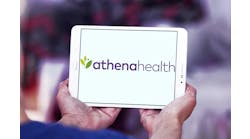The Arlington, Va.-based Surescripts, the nation's largest e-prescription network, has expanded to connect an additional 19 state health information exchanges (HIEs) and health information service providers (HISPs), enabling clinical data to be shared electronically and facilitating improved care coordination among providers with access to Surescripts’ secure and integrated network services.
Of the new participants in the Surescripts network, 15 are state or regional HIEs. The others are a Tennessee HISP (Information Corporation of America), two electronic health record (EHR) vendors (Cerner and Quest Diagnostics), and a healthcare system (University of Pittsburgh Medical Center).
This connection will allow doctors to electronically share clinical information about patients—including test results, medication histories and summaries of recent visits—with their patients’ other care providers, including specialists, pharmacists, radiologists, and lab technicians. This represents a shift away from outdated communications systems—such as fax machines, telephones and the postal service —to more secure and technologically advanced approaches. For patients, the change will be most noticeable during visits with their doctor who will now have access to up-to-date clinical information provided by previous care providers, instead of depending on information provided by the patient.
Surescripts’ new connections will facilitate health information sharing across local and regional care communities. In this capacity, Surescripts serves as an HIE connection gateway for network participants and supports Direct-compliant services.
“We are undergoing a significant shift from a volume- to value-based healthcare system and our business is evolving to meet the future needs of the entire healthcare eco-system,” Harry Totonis, president and CEO of Surescripts, said in a statement. “The continued growth of the Surescripts network is driven by the fact that healthcare communities are realizing that electronic health information exchange is necessary to transform the way healthcare is delivered at the patient level and the increasingly rapid implementation of the federal government’s meaningful use guidelines.”

